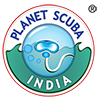This is the latest installment in Casson Trenor’s monthly column, 4 Oceans, about protecting our fisheries and ocean health through sustainable seafood.
The ocean is mysterious. It has obscured many of our planet’s most fantastic treasures from view since time immemorial, tucking them away in remote tropical waters, or hiding them deep beneath the white-capped fangs of raging polar seas. Sadly, many of these wonders are threatened by unbridled fishing pressure, deluges of castaway plastics, and a simple but devastating characteristic that, more than anything else, could guarantee their destruction: anonymity. In this installment of “4 Oceans,” we’ll take a look at four astonishing marine marvels that most people have never heard of, and then discuss how these delicate ecosystems are under threat and what we as consumers can do to protect them.
Zhemchug Canyon
Zhemchug (“pearl” in Russian) is the longest, widest and deepest canyon in the world. Its total volume is nearly twice that of the Grand Canyon. It is vast beyond description and teems with fascinating organisms. It is also hundreds of fathoms underwater.
Zhemchug, sprawling southwest from the Alaskan shore and deep into the Bering Sea, is home to dozens of soft corals, sponges and other invertebrates found nowhere else in the world. Only in the last five years have scientists have begun to plumb the depths of Zhemchug, and we still have virtually no information on what marvels it may conceal. That said, time is already running out.
Every year, the Alaskan pollock fleet rakes Zhemchug repeatedly with gigantic trawl nets in its relentless quest for fish protein (pollock is the low-value, high-volume fish often used to make products like fish sticks and fast-food fish sandwiches). While there is an argument for using pollock in our food system, there is no excuse for pulverizing Zhemchug Canyon (or its neighbor, Pribilof Canyon) to get it. The pollock fishery covers thousands upon thousands of square miles outside of the canyons, and the vast majority of pollock is caught in these areas rather than Zhemchug or Pribilof. Pollock producers and companies that sell pollock products must commit to sourcing their pollock from outside the canyons if these amazing treasures are to survive.
To help protect Zhemchug Canyon: Avoid pollock products until leading seafood companies pledge only to source pollock from outside of the canyons, and then support those companies.
The Ross Sea
The Ross Sea, a remote, half-frozen dent in the side of Antarctica, is aptly nicknamed the “the Last Ocean” — it is the only remaining oceanic ecosystem on our planet with a relatively intact animal population at all levels of the food chain. Elsewhere in the world, the ocean’s apex predators — sharks, bluefin tuna, swordfish, etc. — have been fished to the point of near-collapse. After nearly a century of industrialized fishing, the Ross is the only remaining sea that still has a strong top-level predator population.
The Ross Sea has no sharks. Instead, the food chain is dominated by two predators: the Antarctic toothfish and the Ross Sea orca. The toothfish, more commonly known by its menu-friendly moniker “Chilean sea bass” is the largest fish in the Ross Sea and a lynchpin of its ecosystem. The Ross Sea orca is a rare and isolated subspecies of killer whale found nowhere else in the world. Both species are under threat.
The Ross Sea is under increasing pressure by an emerging fishery targeting Antarctic toothfish. In order to satisfy a hunger for Chilean sea bass fillets, ships are now beginning to enter the last pristine ocean in search for white-fleshed plunder. Chilean sea bass is also a prime prey item for the Ross Sea orca, and recent science has identified a correlation between decreasing Antarctic toothfish populations and a diminishing orca presence.

